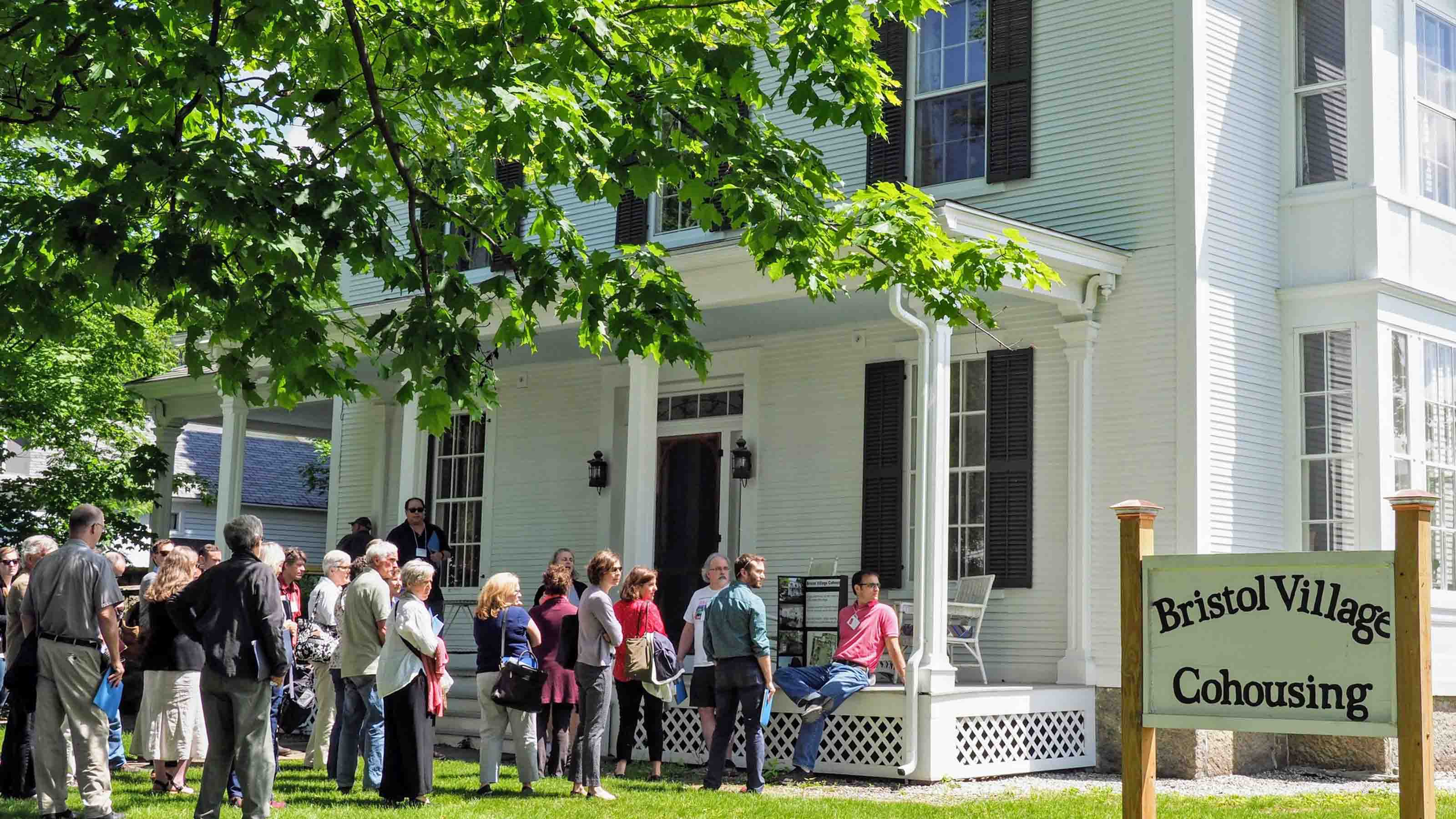The Benefits of Staying Put in Retirement
Pulling up a lifetime of stakes and retiring where it's warm and sunny may be a tempting prospect. But think again.

I like reading stories on the "best cities" in America to retire in. I always learn something new about different cities as I peruse the lists, such as Kiplinger's 10 Great Retirement Cities in the U.S. But I'm usually seeking ideas for places to visit sometime -- not necessarily places to live.
QUIZ: Are You Really Ready for Retirement?
One reason these lists are so seductive is that they reflect popular visions of the "good life" of retirement: An aging worker says goodbye to her workmates for the last time, sells her home and moves hundreds (if not thousands) of miles away to a new abode -- preferably in a temperate climate.

Sign up for Kiplinger’s Free E-Newsletters
Profit and prosper with the best of expert advice on investing, taxes, retirement, personal finance and more - straight to your e-mail.
Profit and prosper with the best of expert advice - straight to your e-mail.
The retire-and-move ideal became commonplace during the post–World War II decades: the 1950s and '60s. Poverty rates among the elderly had plummeted thanks to the advent of Social Security in 1935, and Medicare gave retirees' wallets a boost in 1965. Many retirees enjoyed a monthly check from their employer's defined-benefit pension plan. Older Americans had enough financial independence to develop a distinct lifestyle as they migrated en masse from Snowbelt cities to Sunbelt communities, inspiring the vision of retirement as a leisurely life of golf in the morning and cocktails on the patio in the evening. "In the past, such an experience of retirement was limited to the wealthy few that could afford it," Massachusetts Institute of Technology economist Dora L. Costa wrote in The Evolution of Retirement. "Now, it is an option available to the majority of workers."
But is it really a widely available option anymore? Reality is increasingly diverging from those popular images of the good life. Americans of all ages -- including the elderly -- are relocating less following the steep decline in home values after the housing bubble burst in 2006. A mere 11.6% of U.S. residents moved between 2010 and 2011, the lowest rate since 1948, according to the Census Bureau. Migration among aging Americans to classic Sunbelt magnets Phoenix and Las Vegas is down as well.
The number of older Americans continues to grow, but they are increasingly "aging in place." For instance, Georgia's senior population -- those age 65 and older -- will swell by 40% between 2010 and 2020, a handful of scholars from the Brookings Institution predict in Getting Current: Recent Demographic Trends in Metropolitan America. All but 4% of that increase will come from seniors aging in place, they say.
The shift toward staying put runs even deeper than the depression in home values. The leading edge of the massive baby-boomer generation has reached the traditional age of retirement of 65. The youngest boomers will cross that age milestone in 18 years. Boomers in the aggregate have accumulated little savings, especially after the devastating financial impact of two bear markets and two recessions in less than a decade (with the prospect of another economic and financial bust looming if the European sovereign debt crisis spirals out of control). The savings dearth is the impetus for the standard retirement advice these days: Work well into your traditional retirement years.
Yes, you may be ready to say goodbye to full-time employment. Enough is enough. But keeping a part-time job or a less stressful full-time position would allow you to delay tapping your retirement savings and harness the power of compound interest for a few more years. More important, you could wait to file for Social Security. The Social Security benefit increases every year you wait to file between ages 62 and 70. Between ages 66 and 70, the boost is an inflation-adjusted 8%. That's a tough hurdle for even the best Wall Street money managers to match.
If you work longer, that will probably influence where you retire. For most people, it makes sense to stay where they are because they can more easily find jobs and volunteer opportunities by tapping their established network of nearby friends, family members and acquaintances. A cottage industry of academic research convincingly shows that some 50% or more of all jobs come through informal channels -- connections to friends, families and colleagues. Experience tells us that having such a network makes it far easier for a soon-to-be-retiree to get a part-time consulting contract, an opportunity to use hard-earned know-how at a local business, or a chance to draw on a private-sector background to help out a nonprofit venture.
The drawback to taking the traditional route in old age from the Twin Cities to Orlando; Los Angeles to Phoenix; Washington, D.C., to Winston-Salem; and so on is that valuable community networks are suddenly useless.
It's always possible to create new networks, but that takes time -- a scarce commodity among the aged. From a "work longer" perspective, it often pays to stay put and tap your resources.
So staying local during the traditional retirement years benefits you financially in two major ways. First, nurturing the different networks in your community is truly a critical investment -- the way stocks, bonds and other types of financial savings are important to a secure old age. Second, you have a good vantage point for researching ways to improve your current home, rather than looking into possible digs in far-away climes across the country. For instance, do your bathrooms need remodeling for safety as you age? How about the kitchen? Or would it be smarter to downsize to a nearby condo or even a continuing-care community? What's the local place where you can best see yourself working, living and aging gracefully?
It's striking how many communities across America are embracing a "local" sensibility, from local food and locavore diets to local entrepreneurs and buy-local movements. As aging Americans work longer -- out of financial need or simply to remain engaged -- their networks should be added to that list of local benefits.
Get Kiplinger Today newsletter — free
Profit and prosper with the best of Kiplinger's advice on investing, taxes, retirement, personal finance and much more. Delivered daily. Enter your email in the box and click Sign Me Up.

-
 Two Don'ts and Four Dos During Trump's Trade War
Two Don'ts and Four Dos During Trump's Trade WarThe financial rules have changed now that tariffs have disrupted the markets and created economic uncertainty. What can you do? (And what shouldn't you do?)
By Maggie Kulyk, CRPC®, CSRIC™
-
 I'm Single, With No Kids: Why Do I Need an Estate Plan?
I'm Single, With No Kids: Why Do I Need an Estate Plan?Unless you have a plan in place, guess who might be making all the decisions about your prized possessions, or even your health care: a court.
By Cynthia Pruemm, Investment Adviser Representative
-
 What Does Medicare Not Cover? Eight Things You Should Know
What Does Medicare Not Cover? Eight Things You Should KnowHealthy Living on a Budget Medicare Part A and Part B leave gaps in your healthcare coverage. But Medicare Advantage has problems, too.
By Donna LeValley
-
 15 Reasons You'll Regret an RV in Retirement
15 Reasons You'll Regret an RV in RetirementMaking Your Money Last Here's why you might regret an RV in retirement. RV-savvy retirees talk about the downsides of spending retirement in a motorhome, travel trailer, fifth wheel or other recreational vehicle.
By Bob Niedt
-
 13 Smart Estate Planning Moves
13 Smart Estate Planning Movesretirement Follow this estate planning checklist for you (and your heirs) to hold on to more of your hard-earned money.
By Janet Kidd Stewart
-
 Should You Rent in Retirement?
Should You Rent in Retirement?Making Your Money Last Renting isn't right for all retirees, but it does offer flexibility and it frees up cash.
By Sandra Block
-
 The Problem With 401(k) Catch-Up Contributions for 2024
The Problem With 401(k) Catch-Up Contributions for 2024Retirement Plans New rules governing certain 401(k) catch-up contributions caused confusion and raised concern.
By Kelley R. Taylor
-
 The Best Banks of 2024
The Best Banks of 2024Making Your Money Last Kiplinger's list of the best banks, based on interest rates, fees and other features.
By Lisa Gerstner
-
 Half of Mothers Have Little or No Retirement Savings
Half of Mothers Have Little or No Retirement SavingsMother’s Day comes and goes, but many moms face future financial insecurity because they have little or no retirement savings.
By Kelley R. Taylor
-
 Retirees: Cohousing is Growing. Is it Right for You?
Retirees: Cohousing is Growing. Is it Right for You?This model of housing is designed to increase interaction. For some retirees, this is a draw. But you should know the details.
By Susan J. Wells